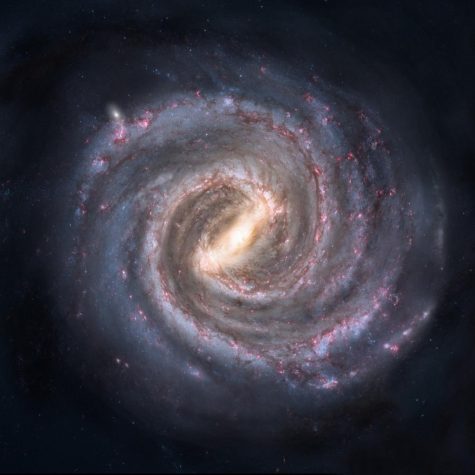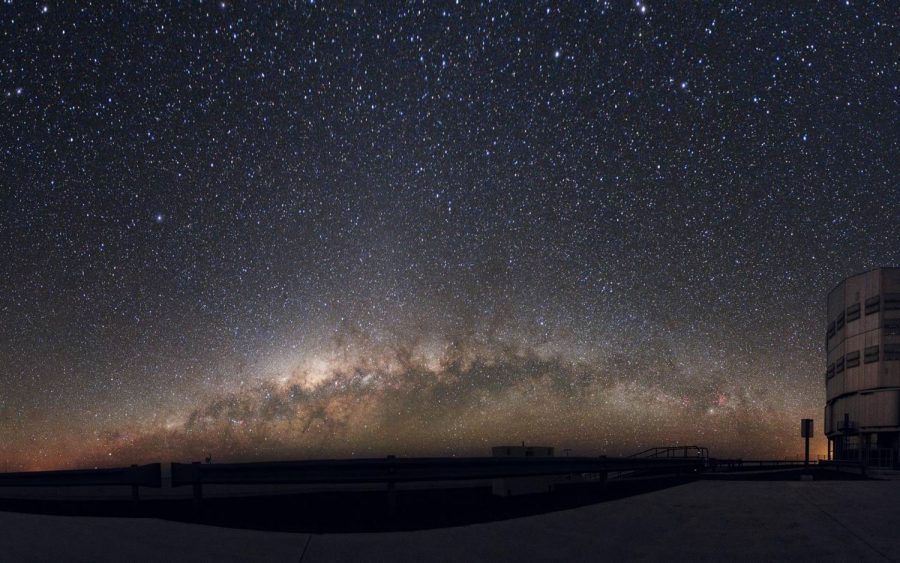The Abnormality of the Milky Way Galaxy
October 17, 2017
Astronomers have always categorized the Milky Way as a “normal” galaxy and have used it as a guideline to help answer many questions, such as how galaxies evolve over time, how galaxies are born, how galaxies die, and even how dark matter interacts, by using our own galaxy’s so-called “average” characteristics. However, recent studies have made astronomers question the normality of our own home galaxy as well as the reliability of using the galaxy as a reference for other information. The Milky Way’s satellite galaxies are quite peculiar, and many astronomers are anxious about whether or not the galaxy is truly normal. Is our home galaxy different from the rest?
To start off, we must first realize that our galaxy is fairly large. Other than that, the Milky Way is similar to many other galaxies. It is a spiral galaxy, it has many stars, there is a supermassive black hole in the center called Sagittarius A, and many smaller galaxies are orbiting around it. However, recent studies from Yale astrophysicists have used a survey called SAGA (Satellites Around Galactic Analogs) to analyze a pattern in small satellite galaxies that orbit biggers galaxies similar to the Milky Way. Researchers have realized that most of the satellite galaxies in the Milky Way are quite strange. Neighbors of the Milky Way have very violent satellite galaxies due to their active star formation and high luminosity. However, the Milky Way’s satellite galaxies are oddly calm. They have no active star formation and are quite dim compared to our neighboring galaxy’s satellites. This startles many astronomers and makes them fear that our galaxy is actually abnormal.
So why is this exactly bad for astronomers? Well, astronomers have always used the Milky Way as a so-called variable for many questions and problems astronomers have faced, and if our galaxy wasn’t normal the whole time, past data could potentially be incorrect. A common example would be star formation. Astronomers are still figuring out how galaxies formed and evolved at their early stages by using the Milky Way for reference; however, if the Milky Way evolved differently from other “normal” galaxies, then this would not accurately depict how galaxies formed and evolved. Astronomers are currently figuring out if this “unique” characteristic in the Milky Way is actually normal or not, and the wait to find out is creating much suspense for many astronomers, including Erika Hamden, a Postdoctoral Fellow at the California Institute of Technology.

“This definitely provides a bigger perspective on things,” Hamden said. “I’m not necessarily anxious about it, but I would say I’m more curious than anything. The luminosity of satellite galaxies may or may not be crucial to the data. However, if this is the case, we may take some steps to revise our model of the Milky Way galaxy. I don’t research specifically in these types of events, but my colleagues have been talking about them, and I’ve gained a good understanding of this problem. We’re definitely going to look into it.”
Astronomers are still researching this problem, and some might have scratched the surface. In fact, this whole dilemma may help us on future research. Astronomers are currently investigating the effects of dark matter on satellite galaxies in our own home galaxy. Dark matter is a mysterious invisible object in our universe and occupies approximately twenty-three percent of the entire universe. The normal matter we can see, touch, hear, smell, and taste, only occupies five percent of the universe. The rest is occupied by another invisible object called dark energy. Dark matter has been studied for over a decade now, and astronomers are slowly making progress in finding it. We don’t know what dark matter exactly is, but its effects are clear. In fact, we know more about what it isn’t than what it potentially could be. This type of matter interacts with large amounts of gravity, such as galaxies, black holes, and stars. Astronomers have suggested that the dimness of these satellite galaxies has some sort of correlation with this infamous dark matter, and while astronomers are solving the “Milky Way Abnormality Case,” they may also be finding answers to what dark matter can potentially be.


















































































































































